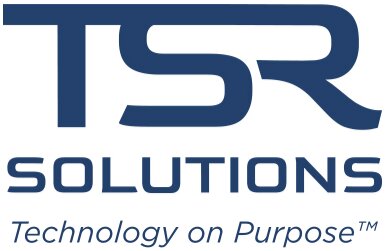Operating in the realm of Information Technology can feel akin to diving into a sea of alphabet soup. From CPU to GPU, LAN to WAN, and HTTP to HTTPS, the IT landscape is peppered with a plethora of acronyms that can leave even the savviest of tech enthusiasts scratching their heads. In this blog, we're going to unravel the mystery behind these commonly used acronyms, shedding light on their meanings and significance. Whether you're a seasoned IT professional looking to refresh your knowledge or a newcomer eager to decipher the language of the digital age, join us as we decode the alphabet soup of IT acronyms.
API - Application Programming Interface: Set of rules and protocols that allows different software applications to communicate with each other.
BYOD - Bring Your Own Device: Policy allowing employees to use their personal devices, such as smartphones or laptops, for work purposes.
CDN - Content Delivery Network: System of distributed servers that deliver web content to users based on their geographic location, improving website performance and reliability.
CIO - Chief Information Officer: Senior executive responsible for the overall management and implementation of an organization's information technology strategy, including technology investments, IT infrastructure, and digital initiatives.
CISO - Chief Information Security Officer: Senior executive responsible for overseeing an organization's information security strategy and ensuring that security measures align with business objectives and regulatory requirements.
CLI - Command Line Interface: Text-based user interface used to interact with a computer program or operating system by typing commands into a terminal or console.
CPU - Central Processing Unit: The primary component of a computer that executes instructions and performs calculations.
DDoS - Distributed Denial of Service: Cyberattack that overwhelms a network or server with a flood of traffic, disrupting normal service.
DNS - Domain Name System: System that translates domain names (e.g., example.com) into IP addresses, allowing users to access websites using human-readable names
DR - Disaster Recovery: Process and set of procedures designed to restore IT infrastructure and operations following a disruptive event (e.g., natural disaster, cyberattack), minimizing downtime and ensuring business continuity.
EDR - Endpoint Detection and Response: Security technology that continuously monitors and analyzes endpoint activities to detect and respond to cyber threats in real-time.
ERP - Enterprise Resource Planning: Integrated software systems used to manage core business processes, such as accounting, HR, and supply chain management.
FTP - File Transfer Protocol: Protocol used for transferring files between a client and server on a network.
GDPR - General Data Protection Regulation: European Union regulation designed to protect the privacy and personal data of individuals.
GPU - Graphics Processing Unit: Specialized electronic circuit designed to rapidly manipulate and alter memory to accelerate the creation of images in a frame buffer intended for output to a display device. GPUs are commonly used in graphics rendering tasks such as gaming, video editing, and image processing.
HTTP - HyperText Transfer Protocol: Protocol used for transferring hypertext requests and information on the World Wide Web.
HTTPS - HyperText Transfer Protocol Secure: Secure version of HTTP that encrypts data sent between the browser and the website.
IMAP - Internet Message Access Protocol: Protocol used by email clients to retrieve email messages from a mail server. Unlike POP, IMAP allows users to access and manage email messages stored on the server without downloading them to their local device.
IoT - Internet of Things: Network of interconnected devices embedded with sensors, software, and other technologies for exchanging data and interacting with the environment.
IP - Internet Protocol: Protocol that governs the transmission of data packets over a network.
ISP - Internet Service Provider: Company that provides users with access to the Internet.
LAN - Local Area Network: Network that connects computers and devices within a limited area, such as a home, office, or school.
MAC - Media Access Control: Unique identifier assigned to network interfaces for communication on a network.
MDR - Managed Detection and Response: Managed security service that combines technology, expertise, and human intervention to detect and respond to cyber threats on behalf of an organization.
MFA - Multi-Factor Authentication: Security method that requires users to provide multiple forms of verification (e.g., passwords, biometrics, security tokens) to access an account or system, enhancing security beyond traditional password-based authentication.
ML - Machine Learning: Subset of artificial intelligence that enables systems to learn and improve from experience without being explicitly programmed.
NLP - Natural Language Processing: Branch of artificial intelligence focused on enabling computers to understand, interpret, and generate human language.
OOP - Object-Oriented Programming: Programming paradigm based on the concept of "objects," which can contain data and code to manipulate the data.
OS - Operating System: Software that manages computer hardware and provides common services for computer programs.
PaaS - Platform as a Service: Cloud computing service that provides a platform allowing customers to develop, run, and manage applications without the complexity of building and maintaining the infrastructure.
POP - Post Office Protocol: Protocol used by email clients to retrieve email messages from a mail server. POP allows users to download messages from the server to their local device, typically deleting them from the server in the process.
RAM - Random Access Memory: Computer memory that allows data to be accessed quickly by the CPU, typically volatile and used for temporary storage.
ROM - Read-Only Memory: Type of computer memory that stores data permanently and cannot be modified or erased by normal means. It typically contains firmware or software instructions necessary for booting up a computer or device.
SaaS - Software as a Service: Software delivery model where applications are hosted by a third-party provider and accessed over the Internet.
SIEM - Security Information and Event Management: Software solution that provides real-time analysis of security alerts generated by network hardware and applications, helping organizations detect and respond to security incidents more effectively.
SDK - Software Development Kit: Set of tools, libraries, and documentation for developing software applications for a specific platform or framework.
SMTP - Simple Mail Transfer Protocol: Protocol used for sending email messages between servers on the Internet. It's responsible for the transmission of outgoing mail from a client to a server or between servers.
SOC - Security Operations Center: Centralized facility or team responsible for monitoring, analyzing, and responding to cybersecurity incidents and threats in an organization's IT infrastructure.
SQL - Structured Query Language: Standard language for managing and manipulating relational databases.
SSID - Service Set Identifier: Unique identifier attached to a wireless network. It allows wireless devices to identify and connect to a specific network when multiple networks are available.
SSL - Secure Sockets Layer: Protocol for secure communication over a computer network, commonly used to secure data transmitted between a web server and a browser.
TCP/IP - Transmission Control Protocol/Internet Protocol: Set of networking protocols used for communication between devices on the Internet. TCP provides reliable, connection-oriented communication, while IP is responsible for addressing and routing packets across networks.
TLD - Top-Level Domain: The highest level in the hierarchical Domain Name System, such as .com, .org, or .net.
vCIO - Virtual Chief Information Officer: Outsourced or virtual role that provides strategic IT leadership and guidance to organizations without a dedicated in-house CIO, offering expertise in technology planning, budgeting, and decision-making.
VPN - Virtual Private Network: Secure network connection that allows users to access private networks over a public network like the Internet.
WAN - Wide Area Network: Network that spans a large geographical area, connecting multiple LANs and other networks.
WPA/WPA2/WPA3 - Wi-Fi Protected Access versions: Security standards for securing wireless networks. WPA (Wi-Fi Protected Access), WPA2, and WPA3 are successive versions of the standard, each offering improved security features over the previous version.
XDR - Extended Detection and Response: Security platform that integrates and correlates data from multiple security products, providing broader visibility and more comprehensive threat detection and response capabilities across various environments.



